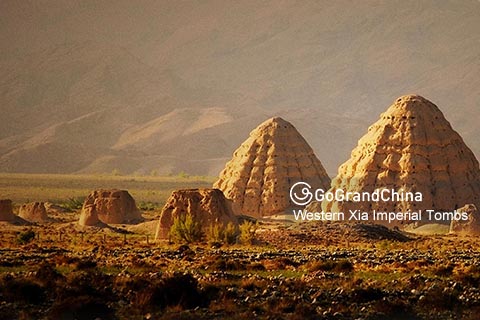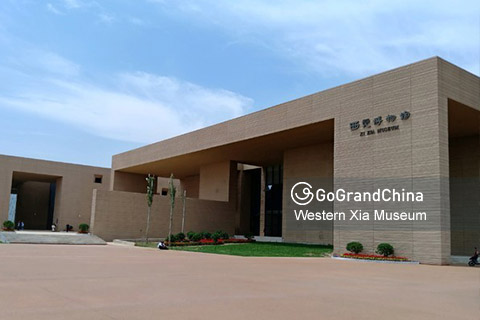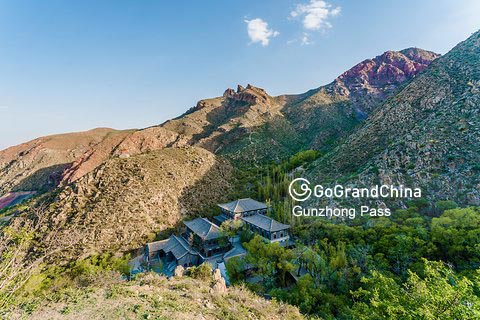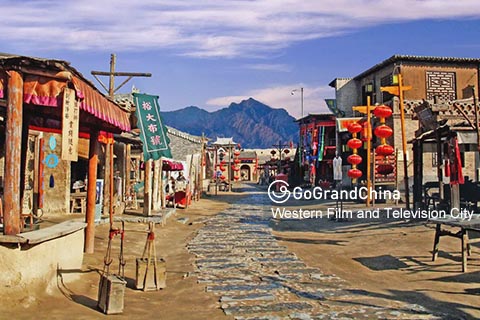Western Xia Imperial Tombs
Introducing Western Xia Imperial Tombs
Western Xia Imperial Tombs are the royal mausoleums of the emperors in the Western Xia Dynasty (1038-1227 AD). Western Xia Imperial Tombs are located at the eastern slope of the Helan Mountains, about 28 km (17.4 miles) away from Yinchuan City.
This expansive 58-square-kilometer necropolis, rivaling the renowned Ming Tombs, is home to nine imperial mausoleums and an impressive 254 subordinate tombs of nobles and officials. These tombs are elegantly arranged in a grand procession along the eastern slopes of the Helan Mountains, providing an engaging exploration of the rich history and culture of the Western Xia Dynasty for every visitor.
Western Xia Imperial Tombs Fast Facts
• AKA: Western Xia Mausoleums
• Chinese Name: Xi Xia Wang Ling 西夏王陵
• Best Time to Visit: April to October
• Recommended Visiting Hours: 3 hours
• UNESCO World Heritage Site: Tentative list
• Things to Do: Photography, Western Xia Culture & History, Archeology
• Opening Hours: 8:00 – 18:00 (Apr – Oct), 9:00 – 17:00 (Nov – Mar)
• Entrance Fee: CNY 85 (Shuttle Bus and Western Xia Museum included)
• Address: Xixia District, Yinchuan, Ningxia Hui Autonomous Region
What UNESCO Says of the Western Xia Imperial Tombs
Set against the vast Gobi Desert and the rolling Helan Mountains, the Western Xia Imperial Tombs stand as the most well-preserved historic cultural heritage site representing the Tangut civilization at its largest scale and highest rank. These tombs boast a magnificent layout with tiered walls, high towers, and various mausoleum buildings. Unearthed funerary objects and cultural relics, including inscriptions and stone statues, showcase vivid shapes and unique ornamentations that reflect the vibrant nomadic culture of the Tanguts. Together, these elements bear testimony to the exceptional heritage values of a long-vanished civilization renowned for its adaptability and cultural diversity, emphasizing the importance of preserving such sites for future generations.
What to Expect at Western Xia Imperial Tombs
The Western Xia Tombs were originally created by the founder of the Western Xia Kingdom (1038-1237 AD), Li Yuanhao, who built over 70 tombs, one for himself, a number for his relatives and more to be left empty, presumably against theft. Each main tomb has four corner towers, and an array of watchtowers, pavilions housing stone tablets, a sacrificial hall and a coffin platform, although most of these buildings are well beyond recognizable. Archaeologists believe that octagonal glazed-tile pagodas once stood by each tomb. In the war against the ancient Mongolian army from 1220 to 1227, Western Xia Kingdom failed and the imperial tombs were damaged. Today's visitors to the sites can only find piles of relics.


Excavation has been completed on one main tomb and on four of the annexes. The main tomb is believed to be that of Li Yuanhao, and all the tombs have a stairway or sloping path down to their coffin pits. In the wake of the poor maintenance and heavy erosion, most of the buildings are now fairly dilapidated, made from crumbling brown earth and scattered across the plain. Fortunately, building materials, broken stone tablets, towers, glazed tiles, walls and steles with inscriptions of Western Xia or Han characters still remain, and provide visitors with interesting information on the Western Xia. Lots of treasures, arts and sculptures were unearthed from Li Yuanhao's mausoleum and are on display in the Western Xia Museum, which is located near the entrance of Li's tomb. Other cultural artifacts and relics related with ancient Western Xia were also collected from across China and exhibited here.


The main attraction nearby is the Gunzhong Pass (Gunzhong kou), which is a part of the Helan mountain range. This is a perfect area for hiking and admiring the scenery of one of China's least-travelled provinces. Gunzhong literally translates as "rolling bell," and the pass was so named because it resembles a lying bell, with the bell mouth opened to the east, and the mountains forming the bell surface in the other three points of the compass. This is one of Helan mountain's most famous sights, about 35 kilometers northwest of Yinchuan. Also the famous Xibu Yingshicheng (Western Film and Television City) is five kilometers north of the tomb area. Many Chinese films were shot there.
How to Get to Western Xia Imperial Tombs
• The Western Xia Imperial Tombs are located approx. 28 kilometers (17.4 miles) west of Yinchuan.
• Charter a car/bus from GGC to enjoy a hassle-free transfer to the Western Xia Imperial Tombs.
Additional Travel Advice on Western Xia Imperial Tombs
• Please wear comfortable walking shoes.
• It is not recommended to visit the scenic area in rainy days.
There are no products matching the selection.
